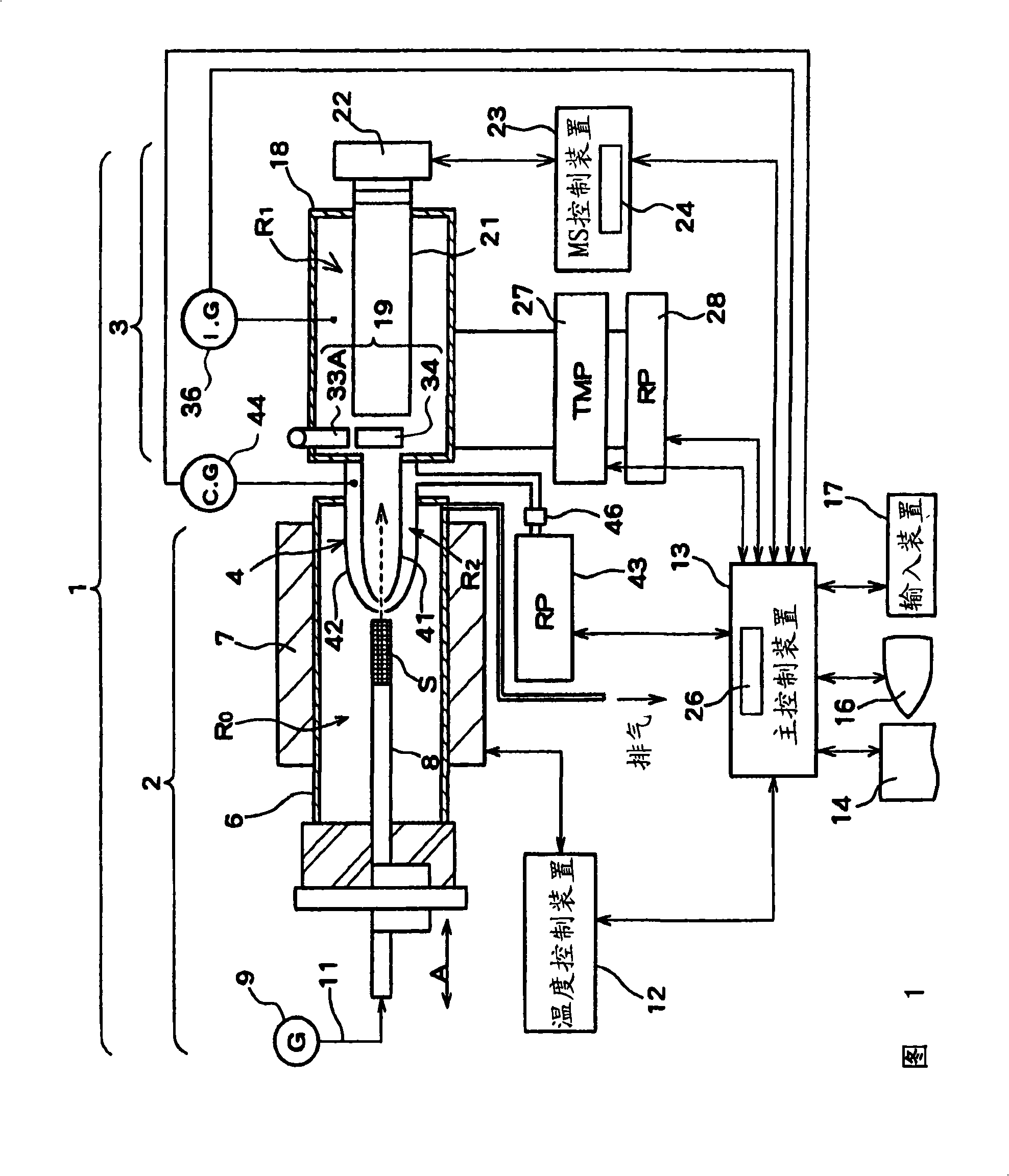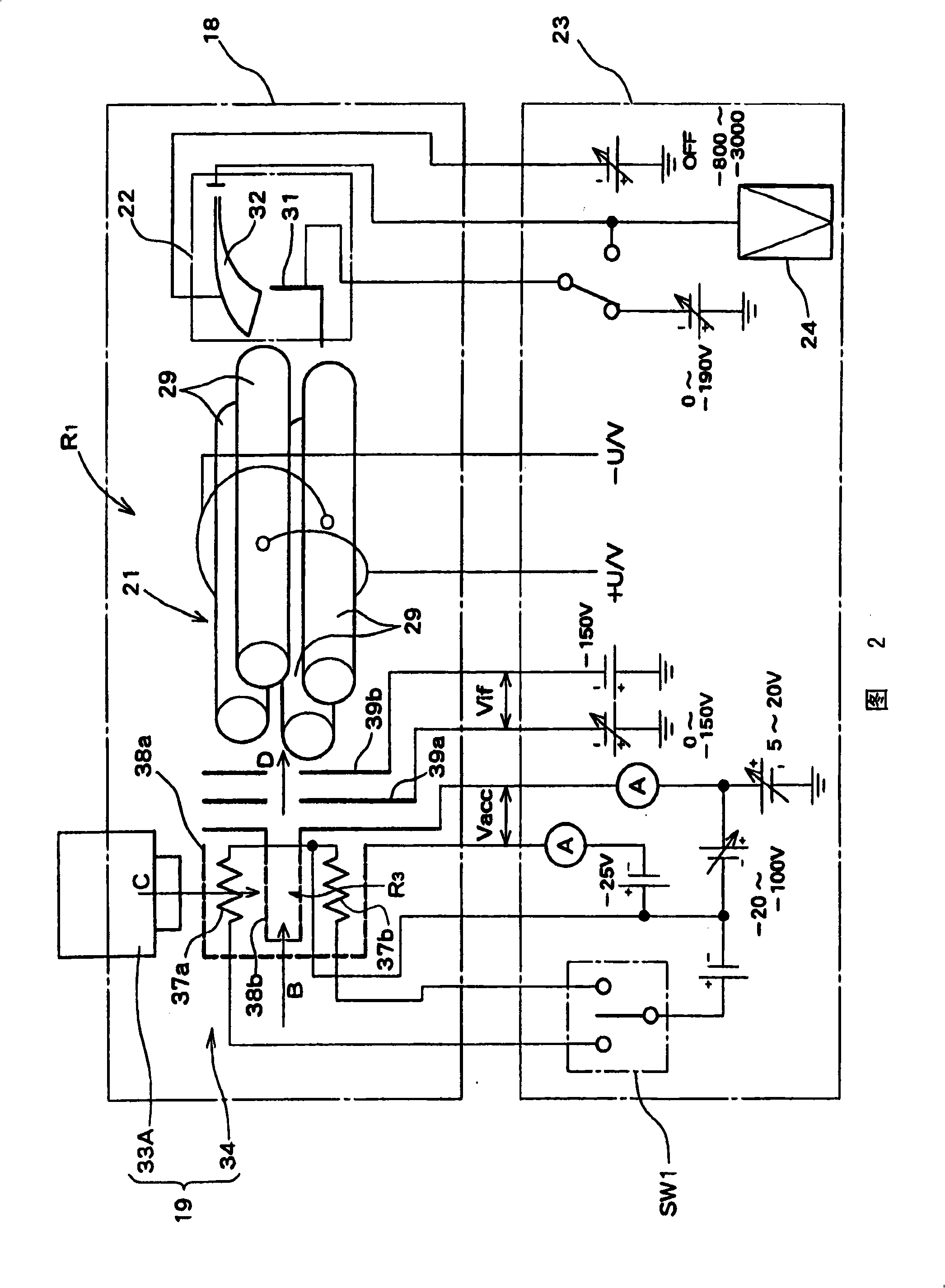Gas analyzer
A gas analysis and gas technology, which is applied in the fields of analyzing materials, measuring devices, and material analysis by electromagnetic means, and can solve the problem of simultaneous ionization of multiple gas molecular components.
- Summary
- Abstract
- Description
- Claims
- Application Information
AI Technical Summary
Problems solved by technology
Method used
Image
Examples
no. 1 approach
[0166] Next, the gas analysis device of the present invention will be described based on the embodiments. In addition, of course, this invention is not limited to this embodiment. In addition, although drawings are referred to in the following description, in order to show the characteristic part of this invention in an easy-to-understand form, in these drawings, the component of this invention may be shown with a scale different from an actual thing.
[0167] FIG. 1 shows an embodiment in the case where the present invention is applied to a gas analysis device that combines a temperature rising detachment device and a mass spectrometer. In FIG. 1 , a gas analysis device 1 includes a temperature-increasing detachment device 2 as a gas generating device, and an analysis device 3 for performing gas analysis. The temperature rising detachment device 2 and the analysis device 3 are connected through a gas delivery device 4 .
[0168] The temperature-rising detachment device 2 is...
Embodiment 1
[0286] In the gas analysis device 1 of Fig. 1,
[0287] (1) dispose the mixed solution of toluene and isopropanol as the sample S to the prescribed position in the sample chamber R0;
[0288] (2) import He (helium) gas as carrier gas;
[0289] (3) From the lamp 33A for PI in FIG. 2, vacuum ultraviolet light having an energy of 10.2 eV Figure 4 The diffuse ultraviolet light shown in (a) is supplied to the ionization region R3 in front of the gas discharge port of the gas delivery device 4;
[0290] (4) The filaments 37a and 33b of Fig. 2 are not energized (i.e. they do not generate electrons);
[0291] (5) Three voltages of -15V, 0V, and +15V are applied between the external electrode 38a and the internal electrode 38b as the electron acceleration voltage Vacc. Among them, the − (negative) potential of the electron acceleration voltage Vacc is the polarity that accelerates the secondary electrons generated by the irradiation of vacuum ultraviolet light in FIG. This is the ...
Embodiment 2
[0295] In the gas analysis device 1 of Fig. 1,
[0296] (1) Toluene as a volatile organic solvent is arranged as a sample S at a specified position in the sample chamber R0;
[0297] (2) import He (helium) gas as carrier gas;
[0298] (3) From the lamp 33A for PI in FIG. 2, vacuum ultraviolet light having an energy of 10.2 eV Figure 4 The diffuse ultraviolet light shown in (a) is supplied to the ionization region R3 in front of the gas discharge port of the gas delivery device 4;
[0299] (4) The filament 37a or 33b of Fig. 2 is not electrified (i.e. it does not generate electrons);
[0300] (5) An electron accelerating voltage (Vacc=0V) is not applied between the external electrode 38a and the internal electrode 38b.
[0301] Under the above conditions, the ionic strength of the gas generated by the sample S was measured without raising the temperature of the sample S (toluene generates gas even if the temperature is not raised). In the present embodiment, the light emit...
PUM
| Property | Measurement | Unit |
|---|---|---|
| Aperture | aaaaa | aaaaa |
Abstract
Description
Claims
Application Information
 Login to View More
Login to View More - R&D
- Intellectual Property
- Life Sciences
- Materials
- Tech Scout
- Unparalleled Data Quality
- Higher Quality Content
- 60% Fewer Hallucinations
Browse by: Latest US Patents, China's latest patents, Technical Efficacy Thesaurus, Application Domain, Technology Topic, Popular Technical Reports.
© 2025 PatSnap. All rights reserved.Legal|Privacy policy|Modern Slavery Act Transparency Statement|Sitemap|About US| Contact US: help@patsnap.com



